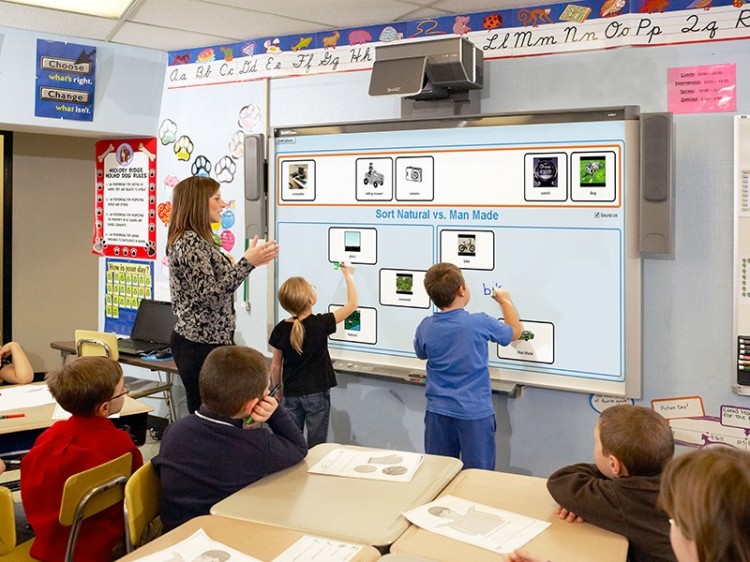Different types of technology used in classrooms:
- Computer in the classroom: Having a computer in the classroom is an advantage to any teacher. With a computer in the classroom, teachers are able to demonstrate a new lesson, present new material, illustrate how to use new programs, and show new websites.
- Class website: An easy method to display a student’s work is to make a web page designed for your class. Once a web page is designed, teachers can post homework assignments, student work, famous quotes, trivia games, and so much more. In today’s society, children know how to use the computer and navigate their way through a website, so why not provide them one where they can be a published author. Just be careful as most districts maintain strong policies to manage official websites for a school or classroom. Also, most school districts give teacher webpages that can easily be viewed through the school district’s website.
- Class blogs and wikis: There are various Web 2.0 tools that are currently being implemented in the classroom. Blogs allow for students to keep a running dialogue, such as a journal, thoughts, ideas, and assignments that also provide for student comment and reflection. Wikis are more group focused to allow numerous members of the group to edit a single document and create a truly collaborative and carefully edited finished product.
- Wireless classroom microphones: Noisy classrooms are a daily occurrence, and with the help of microphones, students can hear their teachers more clearly. Children learn better when they hear the teacher clearly. The benefit for teachers is that they no longer lose their voices at the end of the day.
- Mobile devices: Mobile devices such as clickers or smartphone can be used to improve the experience in the classroom by providing the possibility for professors to get feedback.
- Interactive Whiteboards: An interactive whiteboard that provides touch control of computer applications. These increase the experience in the classroom by showing anything that can be on a computer screen. This not only helps in visual learning, but it is interactive so the students can draw, write, or manipulate images on the interactive whiteboard.
- Online media: Streamed video websites can be used to enhance a classroom lesson (e.g. United Streaming, Teacher Tube, etc.)
- Digital Games: The field of educational games and serious games has been growing significantly recently. The digital games are being offered as tools for the classroom and have a lot of positive feedback including higher motivation for students.
There are many other tools being utilized depending on the local school board and funds available. These may include: digital cameras, video cameras, interactive whiteboard tools, document cameras, or LCD projectors.
- Podcasts: Podcasting is a relatively new invention that makes anybody to publish files to the Internet where individuals can subscribe and receive new files from people by a subscription. The primary advantage of podcasting for educators is quite simple. It enables teachers to reach students through a medium that is both “cool” and a part of their daily lives. For a technology that only requires a computer, microphone and internet connection, podcasting can advance a student’s education beyond the classroom. When students listen to the podcasts of other students as well as their own, they can quickly demonstrate their capacities to identify and define “quality.” This can be a great tool for learning and developing literacy inside and outside the classroom. Podcasting can help hone students’ vocabulary, writing, editing, public speaking, and presentation skills. Students will also learn skills that will be valuable in the working world, such as communication, time management, and problem-solving.
Although podcasts are a new phenomenon in classrooms, especially on college campuses, studies have shown the differences in efficiency between a live lecture versus podcast are minor in terms of the education of the student.
